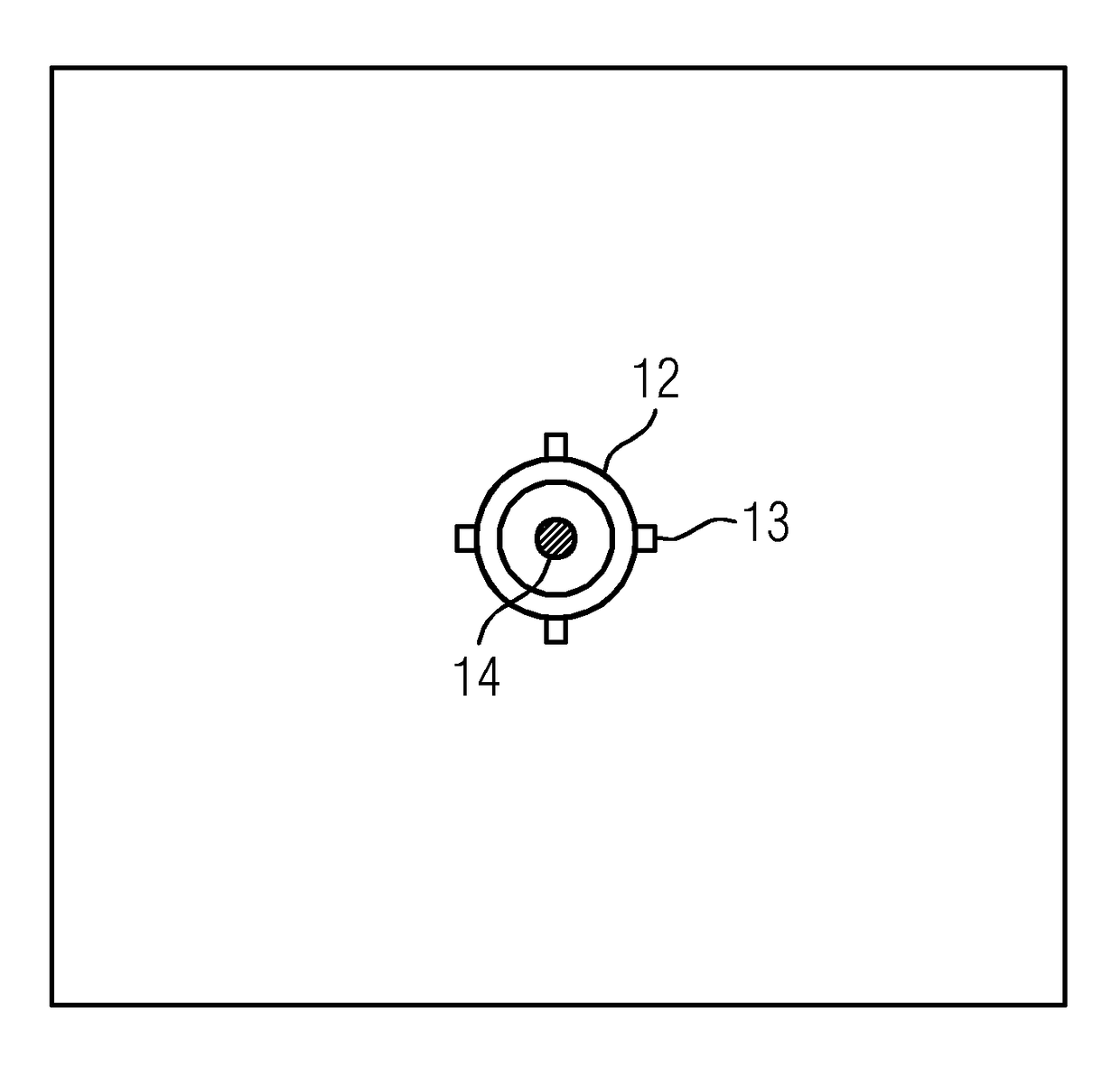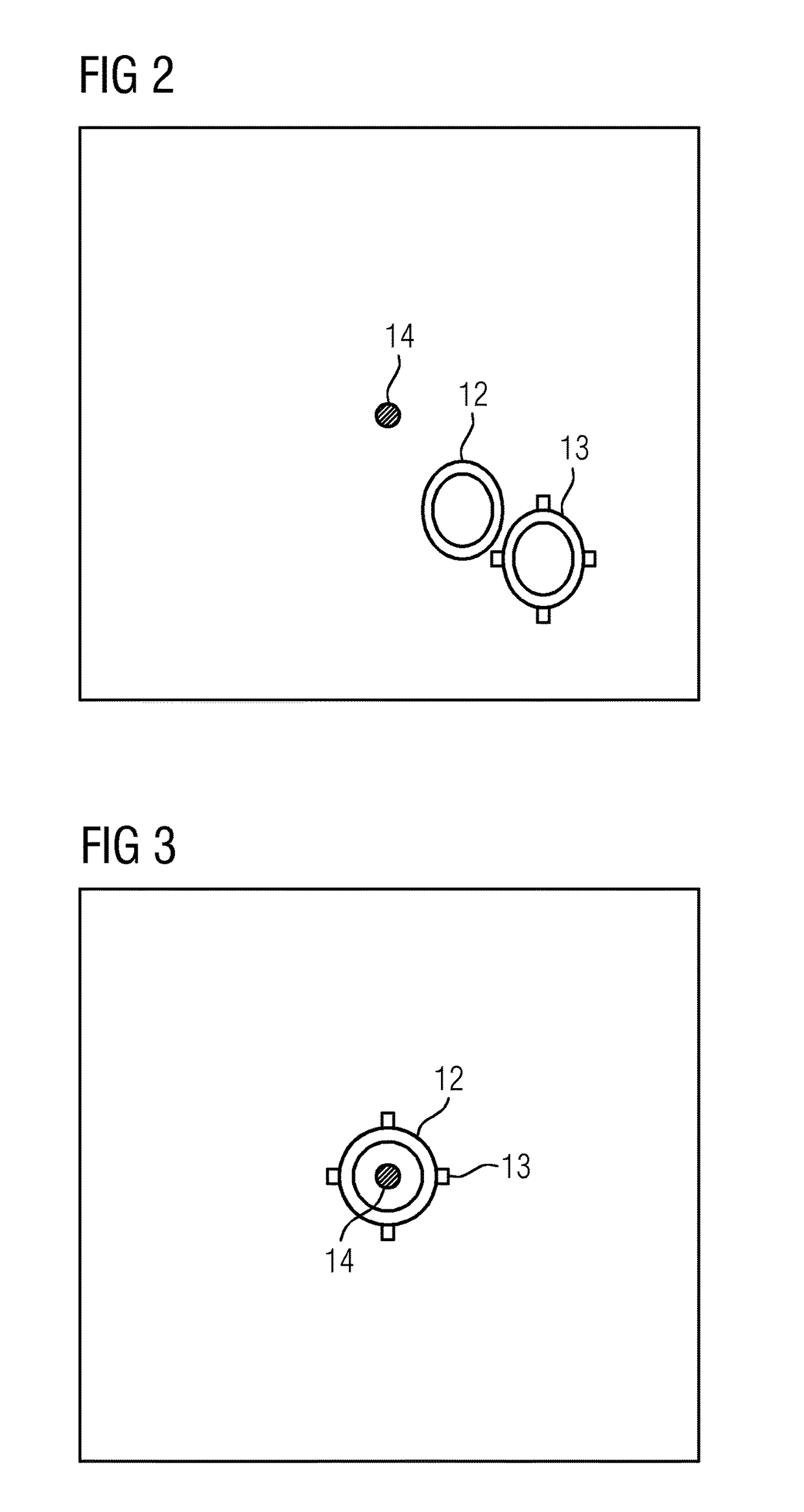Interventional imaging system
a technology of imaging system and interventional body, which is applied in the field of interventional medical diagnosis and/or therapy system, can solve the problems of unsuitability of access path, limited body volume, and inability of physicians to identify, so as to achieve low calibration and registration effort
- Summary
- Abstract
- Description
- Claims
- Application Information
AI Technical Summary
Benefits of technology
Problems solved by technology
Method used
Image
Examples
Embodiment Construction
[0054]Shown in diagrammatic form in FIG. 1 is an interventional imaging system. This comprises a C-arm X-ray system 3, a patient couch 2, and a cart 9 equipped for intervention purposes.
[0055]The C-arm X-ray system 3 comprises an X-ray emitter 4 and an image detector 5 arranged on a C-arm. It is connected to a navigation facility 6, which serves to support interventions which take place with the aid of interventional image data acquired by the C-arm X-ray system 3. According to a simple embodiment, intervention data is acquired in 2D by the C-arm X-ray system 3. In a more elaborate embodiment, however, 3D data can also be acquired, for which purpose the detector normals, which are derived from the position of the C-arm, must be rotated.
[0056]In order to carry out an intervention, the navigation facility 6 loads pre-intervention data from a corresponding data memory 7. The pre-intervention data is, as a rule, 3D data, which is acquired from a body which is to be treated before an int...
PUM
 Login to View More
Login to View More Abstract
Description
Claims
Application Information
 Login to View More
Login to View More - R&D
- Intellectual Property
- Life Sciences
- Materials
- Tech Scout
- Unparalleled Data Quality
- Higher Quality Content
- 60% Fewer Hallucinations
Browse by: Latest US Patents, China's latest patents, Technical Efficacy Thesaurus, Application Domain, Technology Topic, Popular Technical Reports.
© 2025 PatSnap. All rights reserved.Legal|Privacy policy|Modern Slavery Act Transparency Statement|Sitemap|About US| Contact US: help@patsnap.com



